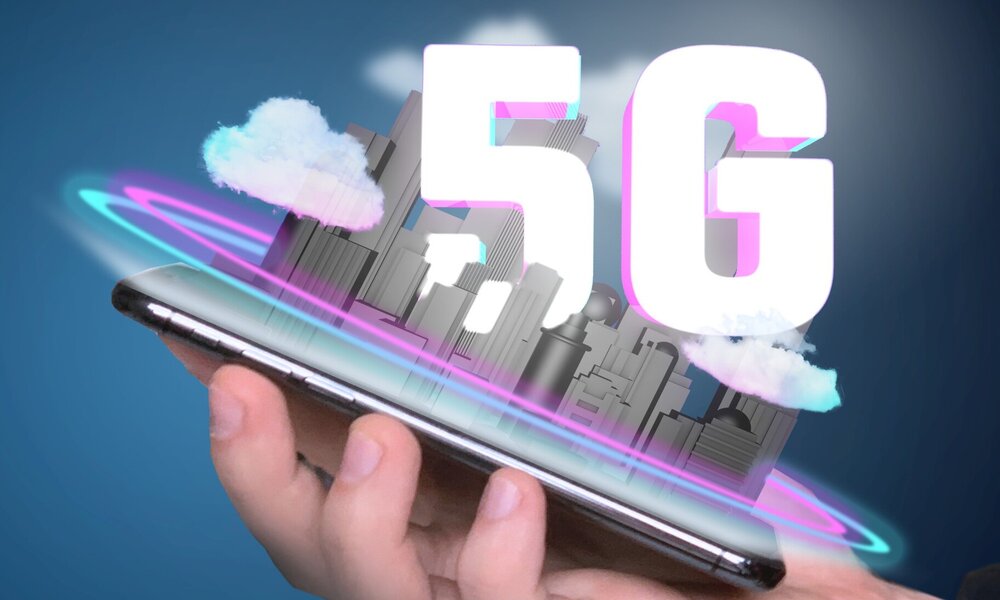
After several years of growing presence in technology plans around the world, everything related to 5G now dominates a very wide swath of the global supply chain, with the competition to control various sectors of this technology heating up. . Equipment manufacturers, smartphone vendors and chip designers are vying for control of machines and services that use 5G, and it is becoming easier to find them in North America, Europe and several parts of Asia. What’s more, 5G has become a multibillion dollar business for many technology companies, and also for a few countries.
But who is actually winning the race for 5G? Which companies are in the lead? Well, to the surprise of some, Huawei is still at the top of the equipment market of telecommunications, which moves about 90,000 million dollars a year. But other manufacturers, according to the Wall Street Journal, are rapidly gaining ground, as Huawei faces restrictions from governments around the world because of the campaign by the US government in recent years to curb the company for cybersecurity reasons.
Huawei is a leader in equipment, at least for now
At the end of 2020, Huawei had 30% of the market, according to consultancy Dell’Oro Group, but in the first six months of 2021, its market share fell to 28.8%. Meanwhile, the Swedish Ericsson In the first half of 2021, its market share rose from 14.7% at the end of last year to 15%, moving to second place in the list of companies in importance in 5G equipment.
While, Nokia has fallen to third place, after losing 0.5% of market share in the first half of the year and falling from 15.4% to 14.9%. Behind these three is the South Korean Samsung, with a 3.2% market share at the end of June, which rises from 2.4% at the end of 2020.
Ericsson has won multiple contracts that have allowed him to propel himself to second place. Of these, the main one is a 5-year, 8.3 billion dollar signed in July with Verizon, with which it will supply the operator with 5G radio software and systems, such as a new technology for mobile antennas called mass multiple input and multiple output. (Massive MIMO), an area that Ericsson has been researching for some time. At the end of last month, the company updated its Massive MIMO product line with a unit about 40% lighter than the previous model, and which is designed to facilitate the deployment of 5G for operators.
But not everything is good news for Ericsson, especially in China, where it has already warned that it could lose market share due to the decision of the Swedish authorities to prohibit Huawei from having a presence in the country’s 5G networks. The Chinese authorities have threatened retaliation, so Ericsson fears trouble in the country.
Nokia, for its part, is rebuilding itself after admitting that they bet on the wrong technology. A few years ago they invested in a very expensive processor (FPGA) for the hardware that they had been selling to operators for 5G networks. But they preferred a more economical and energy-efficient technology, the SoCs, which are more efficient and cheaper to manufacture. Nokia has already embraced SoC technology and carried out a restructuring in the last two years, refining its product portfolio and lowering costs to improve its position in the 5G market.
As to Samsung, analysts say that its behavior should be monitored, and they agree that its market share will grow in the future, as it will happen with Ericsson and Nokia. The company has a range of products that covers all aspects of 5G, from smartphones to chips to base stations, which gives it an advantage because you can test all its products and optimize their performance before launching them on the market. In 2020, it also signed a contract for 6.65 billion dollars for network equipment and services for both 5G and 4G infrastructure, perhaps its largest contract to date, and which completely changes its perspective.
Apple ranks first in 5G smartphones
Meanwhile, in the 5G smartphone market, Manzana has jumped to first place thanks to the launch of several 5G mobile models last year, and despite entering the market several months after other rivals, it has already risen to first place, with a 28.3% of the 5G smartphone market share at the end of June 2021. However, the battle in this sector may become more interesting due to the push of its rivals, and Apple will have many problems to maintain its leadership in the future, especially as 5G terminals appear in the range medium and medium-low. The China Oppo already has a 14.4% market share, with Samsung just behind with 13.9% and Alive with 13.5%. Follow them Xiaomi with 11.2%.
The arrival of iPhones with 5G has made the 5G smartphone market grow strongly. When Apple launched the iPhone 12 only 18% of smartphones sold in the world were compatible with 5G networks. In three months, its sales rose to 32% of all terminals. Its demand will continue to grow, especially as the availability of 5G coverage in the different networks increases. It is expected that by the end of this year there will already be more than 200 operators from 60 countries and regions that offer 5G connectivity.
China leads the way in deployment
As for the countries that are benefiting the most from 5G, China remains in the leadAlthough the United States and a few other Asian countries are making great strides. China has been leading the 5G market from the beginning, and is now the country in the world with the most 5G base stations installed: 961,000. This has led to the high availability of 5G, which together with government incentives for anything that smacks of 5G has laid the groundwork for the adoption of 5G applications that take advantage of these ultra-fast connections.
Among China’s first and main advances in 5G is the use of these networks with autonomous machines that take advantage of the speed and capacity of 5G networks to perform complicated jobs dangerous for humans. Such as mining in coal mines or deep tunnels. But also in remote medicine, as in surgical operations, or in the autonomous transport of people and goods. Many of these applications are not yet highly developed, not in China either, but they are expected to advance as network capacity and availability progresses.
The United States is just behind China in terms of 5G deployment, but not at a great distance. By the middle of this year, around 100,000 base stations had been installed in the country, which, based on its smaller population, is one for every 3,300 people. Meanwhile, in China they have approximately one for every 1,500 people. As for the development of 5G applications, in the United States the bulk of the effort is being done by the private sector, which at this point will not surprise many, and many companies are presenting innovations similar to those in China.
Japan meanwhile, it lags far behind in the deployment of 5G, and therefore in the development of compatible applications. He developed some for the Olympics, but little else, something that the government is trying to mitigate with subsidies and tax breaks for the development of private 5G networks. While, South Korea, which has one of the fastest 5G networks in the world and was one of the first countries to deploy, is also throwing the rest into the development of 5G applications, with heavy public investments: 41,000 million dollars throughout the next four years to help the deployment of specialized 5G networks to support new applications, such as smart factories.
Photo: Cristoph Scholz



